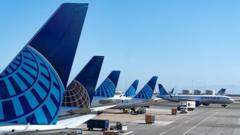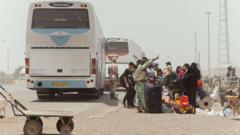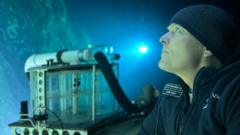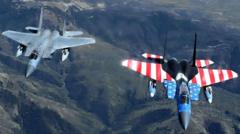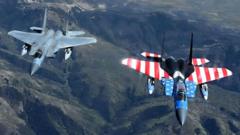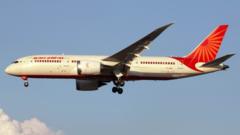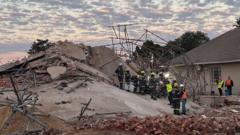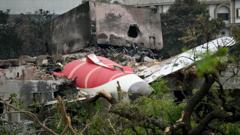The crash of Air India flight 171, involving Boeing's previously acclaimed 787 Dreamliner, highlights longstanding concerns about safety and quality control in the aircraft's production. Investigations are focused on the connection between alleged manufacturing defects and the recent accident, as whistleblowers from within Boeing provide alarming insights into practices that may undermine passenger safety.
Boeing’s 787 Dreamliner: The Safety Myth Under Scrutiny

Boeing’s 787 Dreamliner: The Safety Myth Under Scrutiny
Recent tragedies raise concerns about the safety record of Boeing's 787 as whistleblower allegations surface.
Boeing’s 787 Dreamliner has long been celebrated as a paragon of aviation safety. However, the recent Air India flight 171 tragedy, which resulted in over 270 fatalities shortly after take-off, has turned the spotlight onto the safety of this innovative aircraft and its manufacturing processes. Currently, investigators are examining flight recorder data to determine the cause of the crash, but questions surrounding the reliability of the 787 are rising to the surface.
Despite operating for nearly 15 years without a major accident, the 787 had transported over a billion passengers, with more than 1,100 units in service worldwide. While hailed for its fuel efficiency and advanced technology, the airplane has also faced scrutiny over numerous quality control issues. Whistleblowers have alleged that serious production lapses might have allowed potentially dangerous aircraft to enter service, a claim that Boeing has pushed back against.
Boeing's journey with the 787 began in the early 2000s, motivated by rising fuel costs which prompted the company to prioritize fuel efficiency over speed, a shift catalyzed by the aftermath of the 9/11 attacks. The first test flight in 2009 ignited excitement for this modern marvel, crafted chiefly from composite materials and featuring state-of-the-art systems designed to promote fuel economy and reduce environmental impact.
Nevertheless, shortly after its launch, the 787 encountered significant challenges, notably a severe battery issue that prompted a grounding of the fleet for several months in early 2013. Despite these setbacks, production continued, albeit complicated by defects stemming from different assembly locations that sparked a variety of operational issues.
The persistent whistleblower accounts raise alarm about the assembly process at Boeing, particularly from former workers like John Barnett, who spoke out about rushed production standards leading to safety oversights. Barnett's assertions indicated a culture where time pressures led to the use of substandard materials, casting doubt on the aircraft's built integrity. Following his tragic death in 2024, he left behind a testimony of apprehension regarding the 787's safety, revealing a persistent fear of imminent disasters due to unseen defects.
Similar claims have echoed through the testimonies of other whistleblowers, including Cynthia Kitchens and Sam Salehpour, who reported on deliberate oversights and compromises made during the assembly process. Their objections drew the attention of regulators, highlighting lurking dangers in the assembly line practices that could lead to catastrophic failures in operational aircraft.
In light of the unanticipated crash and mounting concerns, the aviation community now waits for conclusive findings to determine if the 787’s celebrated track record holds merit or if it has been compromised by past production failures. While some analysts argue that any grave issues would have surfaced over the course of the aircraft's operation, the recent tragedy serves as a stark reminder that thorough investigations are essential to ascertain the safety of the Dreamliner, reaffirming that vigilance in aviation safety must never be compromised.

